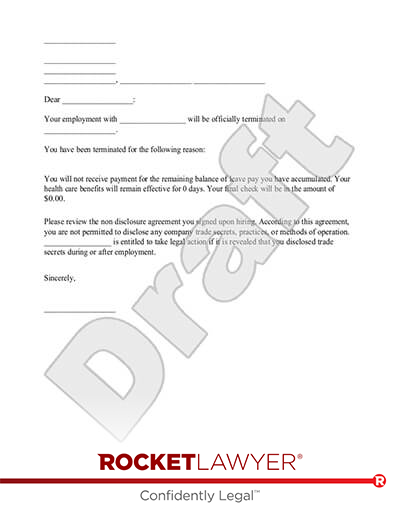Document Performance Issues
For employee terminations based on performance or the employee's inability to satisfy job requirements, you should always document any performance issues and your response to them. Even if your state does not require that termination decisions be supported by documentation, having such records will make it easier for you to justify the decision, should your employee claim the termination was inappropriate. Keep in mind that tardiness is generally considered separate from performance issues, since an employee may still be able to provide adequate performance despite being late. However, the two do overlap.
Make sure that you keep these records even after the employee has been fired, since wrongful termination cases can be brought as long as two to five years after the termination, depending on your state.
Check the Contract
When you're ready to fire someone, your first step is to make sure you are not violating the Employment Contract. Most employer/employee relationships are at-will relationships—in other words, either the employer or the employee can end the work situation whenever they choose, and for any reason (with some exceptions). But if you have a contract that specifies some other terms of employment, those terms will control your ability to terminate the employee.
Check the contract to see what standards for termination are laid out there and what performance markers the employee has to meet. In some cases, the contract may require a certain number of warnings prior to initiating termination, or a certain form for the termination procedure. Make sure you comply with these requirements, or else you may face a lawsuit for wrongful termination or breach of contract.
Provide Payment for the Last Days of Service
It's not required in most states unless you specifically agreed to it in the Employment Contract, but if you can, pay the employee for the last days of service as soon as you terminate him or her. At the very least, delivering the final paycheck immediately will simplify any potential claims that the ex-employee might bring. Whether you have to included accrued benefits or unused vacation days depends on your state; you'll want to check your state Labor Office to find out for certain.
Terminating an employee is an unpleasant but necessary part of running a business. To avoid headaches and future lawsuits, make sure that your termination process complies with both the terms of your Employment Contract and the requirements of your state laws and regulations. Document performance and tardiness issues so that you can demonstrate the validity of your decision to fire that employee, if necessary. Make sure the Employment Contract does not lay out additional requirements for termination procedures and be sure to follow any such specifications. Finally, at the point of termination, provide payment for the last days of service if you can, and check in with your state Labor Office to see if you need to include other benefits.
Please note: This page offers general legal information, not but not legal advice tailored for your specific legal situation. Rocket Lawyer Incorporated isn't a law firm or a substitute for one. For further information on this topic, you can Ask a Legal Pro.
